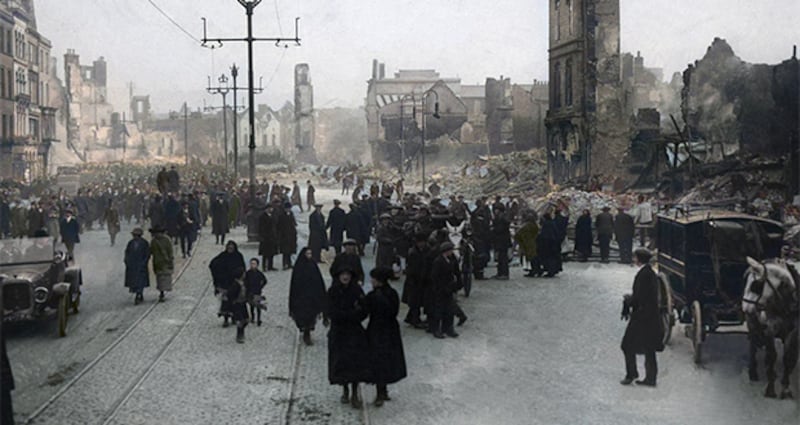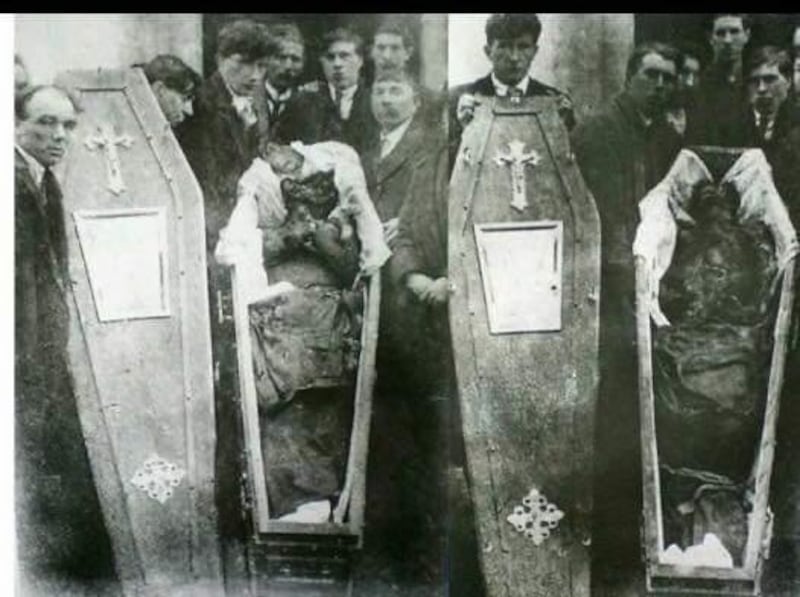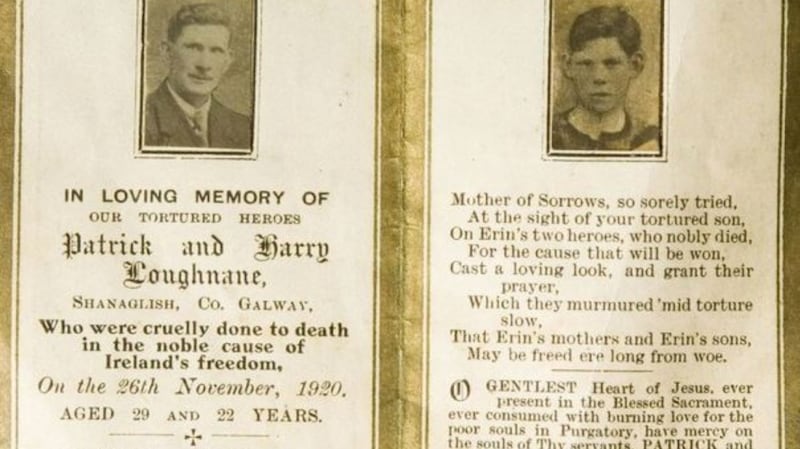One of the most powerful images of the War of Independence is the coffins containing the charred remains of the Loughnane brothers, Patrick and Harry, who were killed during the most tempestuous week of the conflict in late November 1920.
The brothers, from Shanaglish, Co Galway, were picked up by a mixed force of Royal Irish Constabulary (RIC) and Auxiliaries. The brothers were active members of the IRA locally and Patrick was suspected of having raided the home of an ex-RIC man, William Carr, for a firearm.
The brothers had been out threshing the corn when the detachment arrived as night fell on November 26th, 1920.

After their arrest nothing was heard about them. Their frantic mother, a widow, went from RIC barracks to Auxiliary headquarters in Galway city trying to locate them.


Three days after their arrest, the Auxiliaries called at her home to tell her that her sons had escaped from police custody.
Nobody knows what happened to them though several witnesses who had been with them after their arrest testified to them being brutally tortured.
They were first interrogated in Gort RIC barracks, then tied to the tailgate of a lorry and dragged to Drumharsna Castle near Ardrahan where they were eventually killed.
Their bodies were taken to a spot near where they were killed and burned, but the Auxiliaries neglected to bury the bodies and instead threw them into a muddy pond where they were discovered 10 days later.
Evidently the brothers had been savagely beaten and tortured. Two of Harry’s fingers were cut off. Patrick’s legs and wrists were broken. Both their skulls were so fractured that a doctor speculated that hand grenades were blown up in their mouths.
Shortly afterwards, Tomás OhEighin, a local Irish teacher, took photographs of the bodies in the coffins. The coffins, upright and tilted forward, show the remains of two men who resemble the gothic excesses of a Hieronymus Bosch painting.
The photograph was circulated far and wide. A picture is worth a 1,000 words, goes the old adage. The photograph of the Loughnane brothers spoke to the excesses of Crown forces in Ireland in a way no amount of The Irish Bulletin, the Republican propaganda newsletter at the time, could do.
The discovery of the Loughnane brothers came just two weeks after another incident in Galway which hardened public opinion against British rule in Ireland.
Fr Michael Griffin was abducted from his home in Galway city on November 14th. His body was discovered in a shallow grave near Barna. He had been shot through the head.
The death of a priest, the first in Ireland since Cromwellian times, outraged public opinion in Ireland.
It was raised in the House of Commons by Joe Devlin, one of the few nationalist MPs left in the chamber. He suggested to the chief secretary for Ireland Sir Hamar Greenwood that officers of the Crown had kidnapped Fr Griffin and murdered him.
“I do not believe for a moment that this priest has been kidnapped by any forces of the Crown. It is obviously such a stupid thing that no members of the forces of the Crown would do it, Sir Hamar declared. Mr Devlin tartly replied: “That is why they would do it.”
Some 12,000 people are reported to have attended the murdered priest’s funeral in Loughrea on November 23rd, 1920.



















